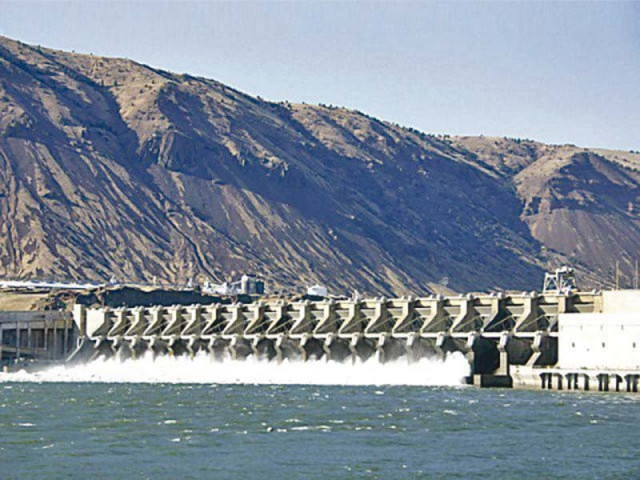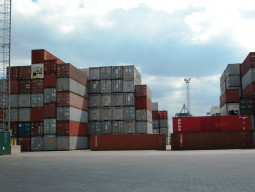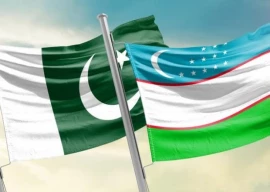
The political parties in Pakistan set their own agenda and they appear to be doing little to come up with long-term national policies.
In its tenure, the Pakistan Peoples Party (PPP) government was more inclined towards giving employment to its supporters in public-sector organisations, which led to the appointment of surplus staff in many of them.
The present administration of Pakistan Muslim League-Nawaz (PML-N), on the other hand, looks more interested in launching metro bus projects and constructing motorways.
However, these things make no significant difference for the common man, who is more concerned about the swelling electricity bill because of the imposition of surcharges despite more than 50% slump in the global crude market.
Read: We need dams
Though Pakistan has vast resources, successive governments have never given importance to utilising them in an efficient manner. The country has been facing flood devastation for the last few years, but no heed has been paid to calls for building water reservoirs.
This vital resource is not only used for drinking, but is also consumed for producing cheap hydroelectric power and irrigating crops of agriculture commodities, which are a major contributor to the overall economic growth.
At present, total water storage capacity of the country is 14 million acre feet (MAF) whereas its annual consumption requirement stands at 117 MAF. Following the recent floods, officials believe, 15 MAF of water will be wasted and it will go into the sea.
“The consumption of one million acre feet has an impact of $1 billion on the economy; this way Pakistan will be facing a loss of $15 billion due to wastage as water reservoirs were not too many,” an official said.
There are only two major dams in Pakistan – Tarbela and Mangla. The former was built in 1977 and its storage capacity has dropped to 6.4 MAF against the earlier 9.4 MAF. However, Mangla Dam’s capacity has been enhanced by 3 MAF to 7.4 MAF following a structure raising project.

According to officials, this addition to the dam’s capacity has addressed a water dispute between Sindh and Punjab. Earlier, the Indus River System Authority (Irsa) – the body that regulates water releases – had to open the Chashma Jhelum link canal to provide water to Punjab, which sparked a row between the two provinces.
Fast-track construction
Keeping this in mind, the government should embark on a campaign of building storages on the Indus River on a fast track in order to provide water to those areas that depend on supplies from the river.
It should build big reservoirs instead of focusing on small structures as it will lead to a marked reduction in oil imports and electricity costs for the consumers.
The electricity produced with the help of water costs only Rs1.5 per unit compared to the average cost of Rs4.5 and Rs22 per unit through gas and diesel respectively.
Experts suggest that the planned Munda dam should be built immediately in order to shield the adjacent city from flood devastation. The deluge has caused loss of human lives, livestock and crops over the years.
In the areas of southern Punjab where different crops are grown on a wide scale, people are forced to use groundwater. Despite the floods, the country will be facing 10% to 15% water shortage from October this year.
According to official statistics, gas production will drop by half from 4 billion cubic feet per day to 2 billion cubic feet in 2020. Therefore, the production of hydroelectric power is the only choice left to tackle the energy crisis.
In the 1991 water accord, it was agreed that storages would be built on rivers where they were feasible. This leaves no question of achieving a consensus as it is a necessity to build the reservoirs.
It is surprising for many that the government is counting on imported coal-based and imported LNG-based plants in Punjab rather than relying on water for cheaper electricity. Only two hydroelectric power projects have been included in the gigantic China-Pakistan Economic Corridor whereas several plants are based on the thermal source.
New policy
Instead of utilising its energies on building the water reservoirs, the government is paying more attention to a case in the international court against India, which has reportedly built over 4,000 small and big dams.
However, work is under way on framing a hydroelectric power generation policy to stimulate investment. The main focus is on projects that have been delayed due to lack of financing.
Pakistan has not been able to convince multilateral donors to provide funds for mega hydel projects like Diamer Bhasha dam. Though the US had pledged funds for the dam during the PPP government, the money was not released.
Pakistan has the potential to produce 100,000 megawatts of hydroelectric power, of which the identified potential stands at 60,158MW, but only 6,919MW has so far been tapped.
The first hydroelectric power development policy was designed in 1995 and the second and third policies were introduced in 2002 and 2013 respectively.
Read: 10 firms, ventures express desire to build Dasu dam
The private sector contributed 7,423MW to thermal power generation and only 84MW to hydroelectric power. The government should learn lessons from the repeated floods and construct dams to produce cheap electricity and save water for agriculture crops in an effort to boost the economy.
The writer is a staff correspondent
Published in The Express Tribune, August 17th, 2015.
Like Business on Facebook, follow @TribuneBiz on Twitter to stay informed and join in the conversation.


















COMMENTS
Comments are moderated and generally will be posted if they are on-topic and not abusive.
For more information, please see our Comments FAQ